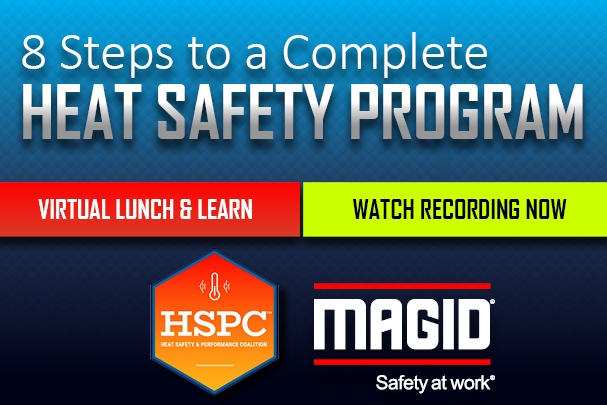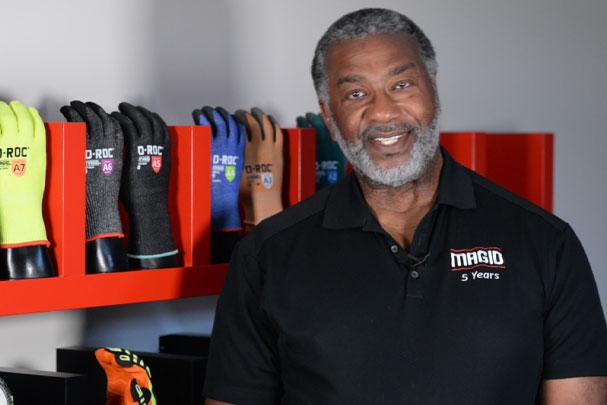
4 Common Causes of Industrial Heat Stress
Whether you manage workers in an outdoor environment, a hot foundry, or a busy manufacturing facility, chances are your employees encounter hot and humid environments at some point during their shift. It’s easy to focus on air temperature alone when considering heat risks, but heat stress can be intensified by things you might not always think about.
HERE ARE 4 COMMON CAUSES OF INDUSTRIAL HEAT STRESS
THAT ARE EASY TO MISS:

1. Working in Direct Sunlight
Even on a relatively mild day, working in the open with no shaded areas means your workers are at serious risk for continual heat stress build-up. So in addition to thinking about the temperature, be sure to increase shaded rest breaks on sunny days and provide shade wherever possible throughout the workday.

2. Heavy Machinery
Heavy machinery can make your worker’s jobs easier, but it can also quickly heat up the surrounding area! This is due to both environmental elements like trees and vegetation and manufactured elements like walls and ceilings that can reflect and trap heat. These hot spots, or “microclimates,” can make a seemingly mild day more dangerous than you think. Read on for advice on finding and measuring these areas to keep your workers safer.

3. Bulky Clothing and PPE
Although proper safety gear is necessary to perform many tasks, heavy work shirts, jackets, sleeves, gloves, etc. tend to trap heat close to a worker’s body and add heat stress to their system. They also don’t dispel heat as well as lighter, loose-fitting, vented clothing. Be sure you’re selecting the lightest options that provide proper protection.

4. Confined Spaces
According to the US Department of Labor, approximately 92 workers die in confined space-related incidents every year. Workers in enclosed work areas can spend long periods of time in extreme temperatures with poor air quality, putting them at heightened risk for increasing their internal body temperature and developing heat illnesses. Utilize body cooling gear and be sure to train workers in confined space safety.
PREPARING FOR THE HEAT YOU CAN'T AVOID
Even when you account for all the factors above, sometimes the job site is just hot.
Be sure to prepare your workers to be safe in hot conditions!

Acclimatize Workers for the Heat
Prepare your workers over the course of one-to-two weeks. Start by exposing new workers to less than 20% of a usual workload in the heat and exposing experienced workers to less than 50%.

Provide Access to Cool Drinks
Easy and constant access to cool water and electrolyte-replacing beverages can keep workers hydrated and cool throughout their shift. Warm, unpalatable fluids that are far away from work areas won’t cut it!

Track Your Microclimate
Use a wet bulb globe temperature monitor (WBGT) to measure the reading of your specific microclimate.
FACTORS A WBGT TRACKS INCLUDE:

Air Temperature | Humidity | Heat from the Sun | Wind Speed

Provide PPE for Hot Conditions
PPE like Magid Cool Powered by Mission that’s made with HydroActive® cooling technology can keep workers cool and comfortable for hours.

Promote Around-the-Clock Hydration
Remind your workers to replenish any lost fluids, salts, or electrolytes before and after work. Tell them that hydration is a constant process, not just when they’re thirsty.
Get free tools to help protect your workers in the heat on our Summer of Heat Illness Prevention page!
I WANT TO SEE MORE!







